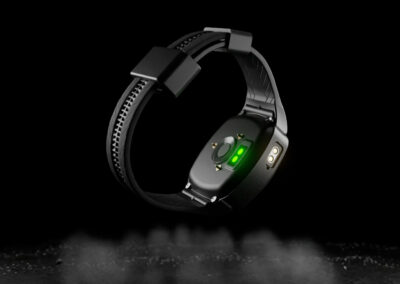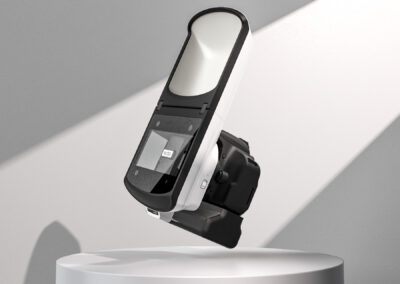Digital Pathology Solution
Omnyx VL120
Omnyx, a GE healthcare and UPMC venture, is the result of extensive collaboration with more than 30 thought leading pathologists from 13 academic medical centers and research laboratories around the globe to create a highly usable, intuitive solution to improve pathologist processes and enable digitization. Omnyx is a fully integrated, scalable, digital pathology solution designed to address the scale and reliability requirements for researchers and pathologists.
The goal was to create an automatic 120 slide scanner for the use in high volume “lean” laboratory environments that could be networked with multiple scanners to digitally scan slides for high resolution remote viewing.

Research
The work of pathology begins in histology, and that’s where HSD started its research. HSD began by evaluating how to integrate digital pathology into a high volume histology laboratory environment. Through our research, we learned that existing technology is based on visual diagnoses utilizing a high-powered microscope and a glass slide embedded with micro tissue samples. Through ethnographic techniques, HSD’s team reviewed existing workflows, learned best practices and interviewed dozens of histotechs, pathologists and lab technicians.
Research
The work of pathology begins in histology, and that’s where HSD started its research. HSD began by evaluating how to integrate digital pathology into a high volume histology laboratory environment. Through our research, we learned that existing technology is based on visual diagnoses utilizing a high-powered microscope and a glass slide embedded with micro tissue samples. Through ethnographic techniques, HSD’s team reviewed existing workflows, leanerned best practices and interviewed dozens of histotechs, pathologists and lab technicians.

Our Process
Initial steps included investigating the current process for preparing and transferring glass slides in leading hospitals and labs. The research helped our team evaluate current workflows an allowed us to more seamlessly integrate into early adoption environments. By simulating existing slide Q&A in the flat, HSD’s design of the 20-slide tray provides histotechs with utmost flexibility to maintain their current process controls while integrating Omnyx’s technology in their environment. We transitioned the prototype process from analog to digital. Storyboards and wireframes lead users through verification testing, ultimately a process that would be transplanted transparently into the workplace.
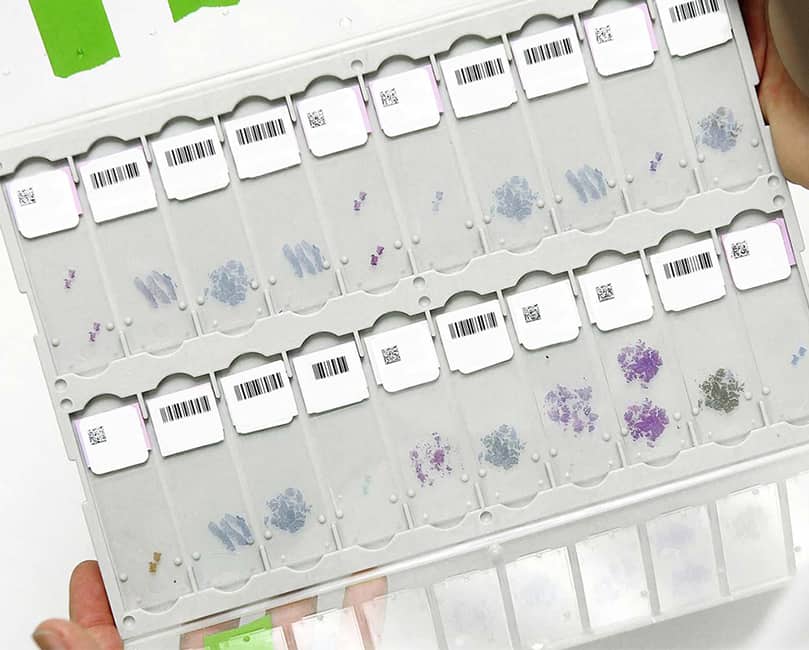
Our Process
Initial steps included investigating the current process for preparing and transferring glass slides in leading hospitals and labs. The research helped our team evaluate current workflows an allowed us to more seamlessly integrate into early adoption environments. By simulating existing slide Q&A in the flat, HSD’s design of the 20-slide tray provides histotechs with utmost flexibility to maintain their current process controls while integrating Omnyx’s technology in their environment. We transitioned the prototype process from analog to digital. Storyboards and wireframes lead users through verification testing, ultimately a process that would be transplanted transparently into the workplace.

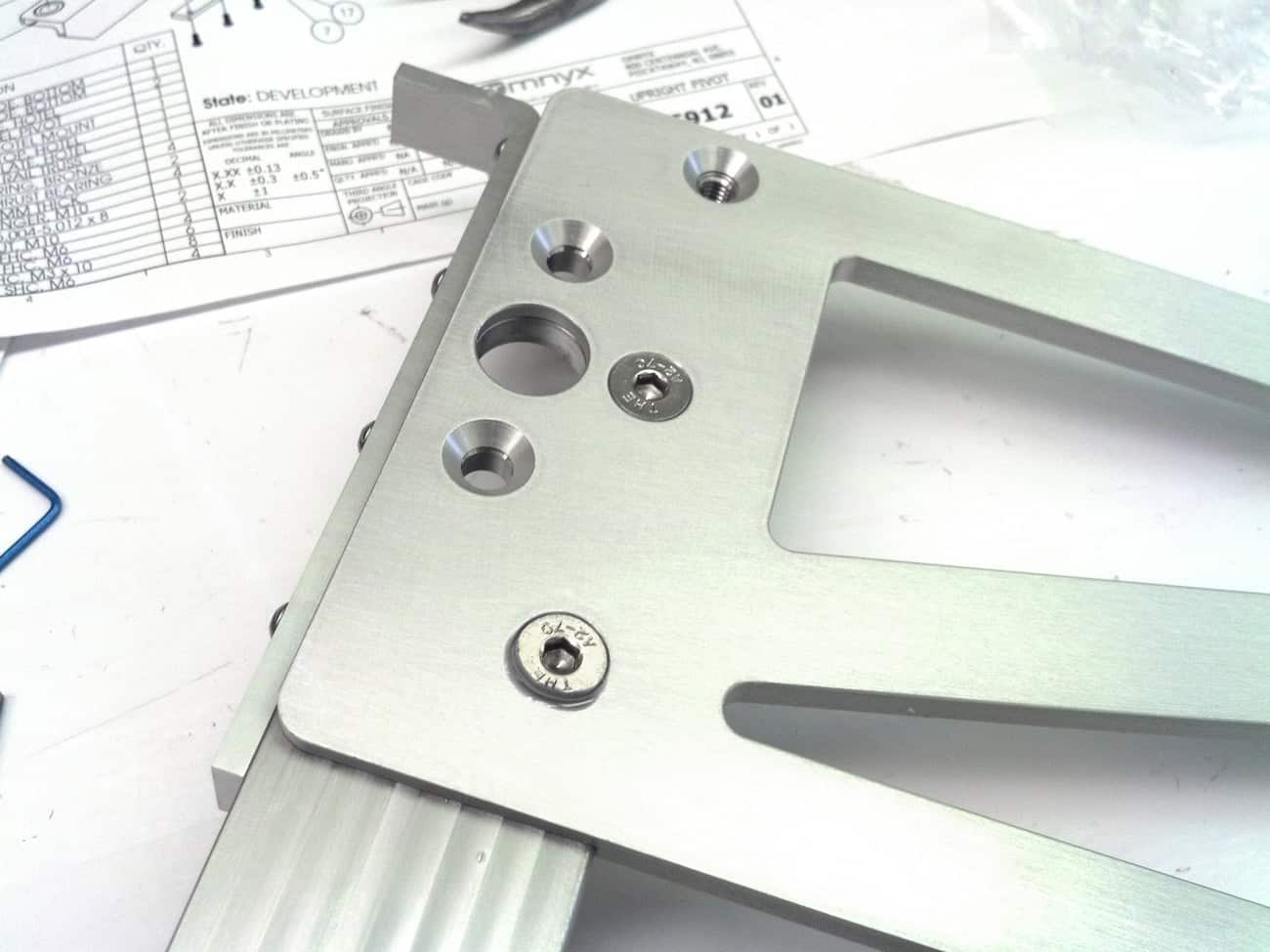
Collaboration
HSD worked with Omnyx’s highly skilled team through all phases of the design process. This included Ethnographic Research, Industrial Design, Mechanical Engineering, Graphic User Interface Design (GUI), Systems Engineering, FEA Simulation, Prototyping, Design for Manufacturability/Serviceability and FDA Documentation Control (PMA) through Manufacture Selection and liaison.
Collaboration
HSD worked with Omnyx’s highly skilled team through all phases of the design process. This included Ethnographic Research, Industrial Design, Mechanical Engineering, Graphic User Interface Design (GUI), Systems Engineering, FEA Simulation, Prototyping, Design for Manufacturability/Serviceability and FDA Documentation Control (PMA) through Manufacture Selection and liaison.

Product
The design of the VL120 was created with a careful understanding of the needs of clinical pathologists and histologists. The Omnyx Integrated Digital Pathology solution is a completely digital environment for managing quality review and slide distribution. The Omnyx system has the capacity to automatically scan 120 slides divided among six slide trays in one-click. With this volume, there is a considerable amount of information that a lab tech needs to manage and control at their fingertips. The system allows for a continuous load and unload, without the need for user selection of scan plans or scan areas.
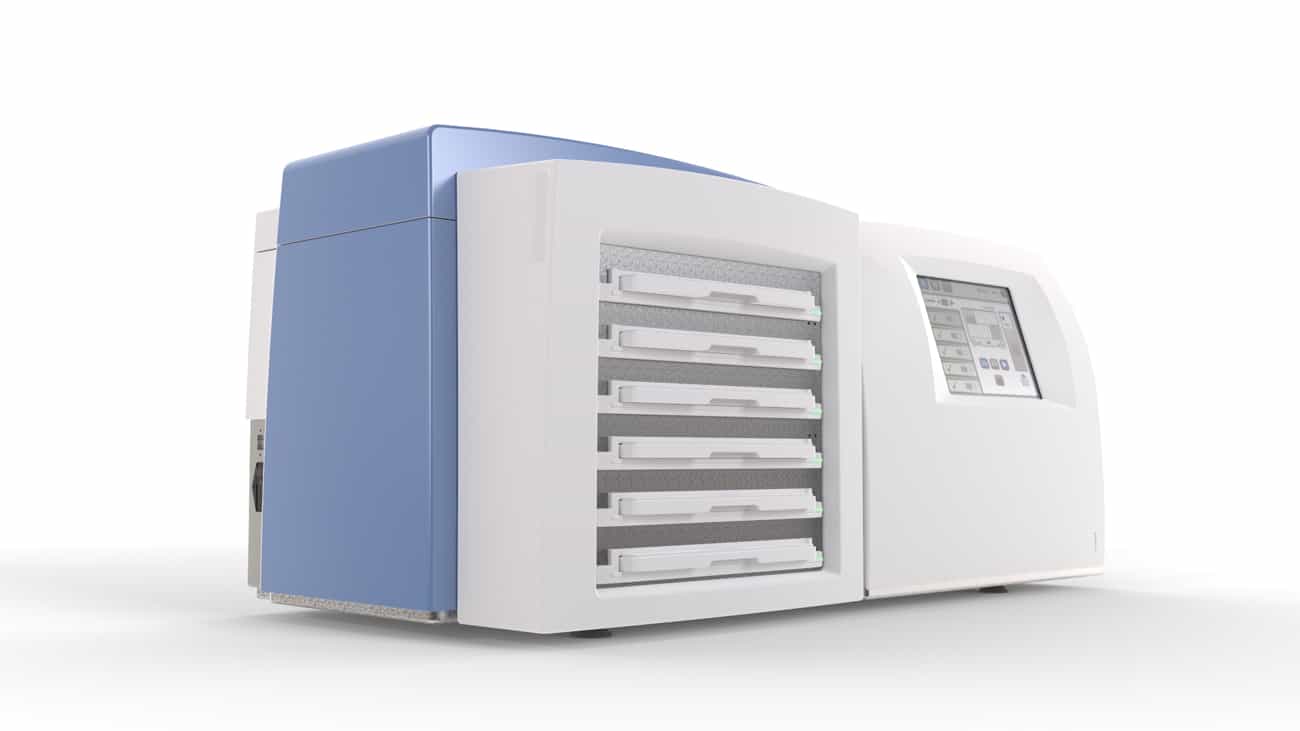
Product
The design of the VL120 was created with a careful understanding of the needs of clinical pathologists and histologists. The Omnyx Integrated Digital Pathology solution is a completely digital environment for managing quality review and slide distribution. The Omnyx system has the capacity to automatically scan 120 slides divided among six slide trays in one-click. With this volume, there is a considerable amount of information that a lab tech needs to manage and control at their fingertips. The system allows for a continuous load and unload, without the need for user selection of scan plans or scan areas.

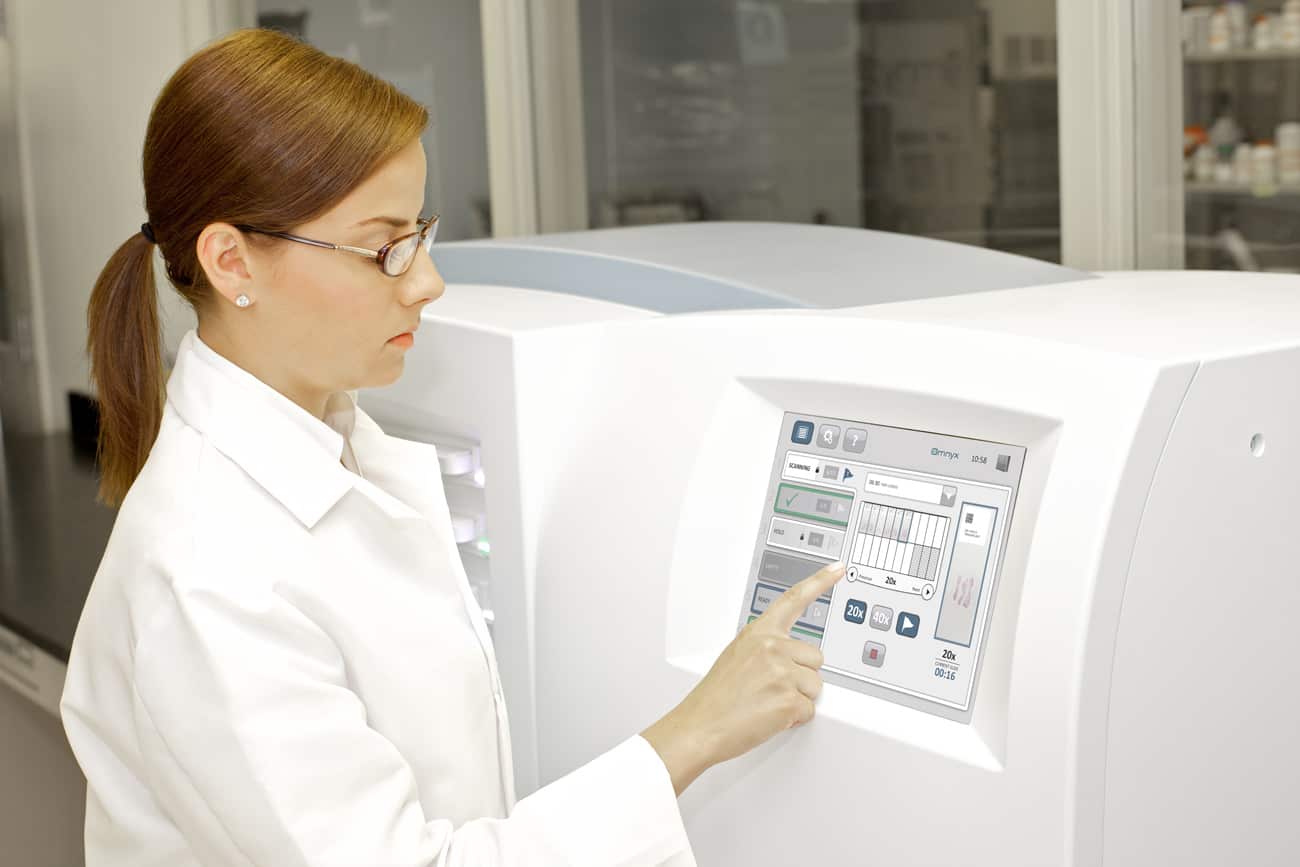
User Interface
The product is built with an on-board LCD touch screen interface created by designers and field experts. A tab system on the user interface controls the six individual slide trays by consistently providing pertinent status information on the tab. Within a tab, a lab tech can visualize slides in a hierarchy from the landscape of a tray to an individual slide. The user has full control of prioritizing trays that may be a “stat” or can cancel a tray that may require immediate diagnosis by a pathologist.
User Interface
The product is built with an on-board LCD touch screen interface created by designers and field experts. A tab system on the user interface controls the six individual slide trays by consistently providing pertinent status information on the tab. Within a tab, a lab tech can visualize slides in a hierarchy from the landscape of a tray to an individual slide. The user has full control of prioritizing trays that may be a “stat” or can cancel a tray that may require immediate diagnosis by a pathologist.

Engineering
The system architecture was carefully laid out with serviceability and ease of use. The robotic tray holder can be accessed from the front, while electronics can be easily accessed from the side of the unit. HSD worked with plastic material and mold experts to develop the molded slide trays in special plastics to hold high tolerances, avoid warping and degradation from cleaning solutions and allow interaction with the pick and place robotic slide holder.

Engineering
The system architecture was carefully laid out with serviceability and ease of use. The robotic tray holder can be accessed from the front, while electronics can be easily accessed from the side of the unit. HSD worked with plastic material and mold experts to develop the molded slide trays in special plastics to hold high tolerances, avoid warping and degradation from cleaning solutions and allow interaction with the pick and place robotic slide holder.

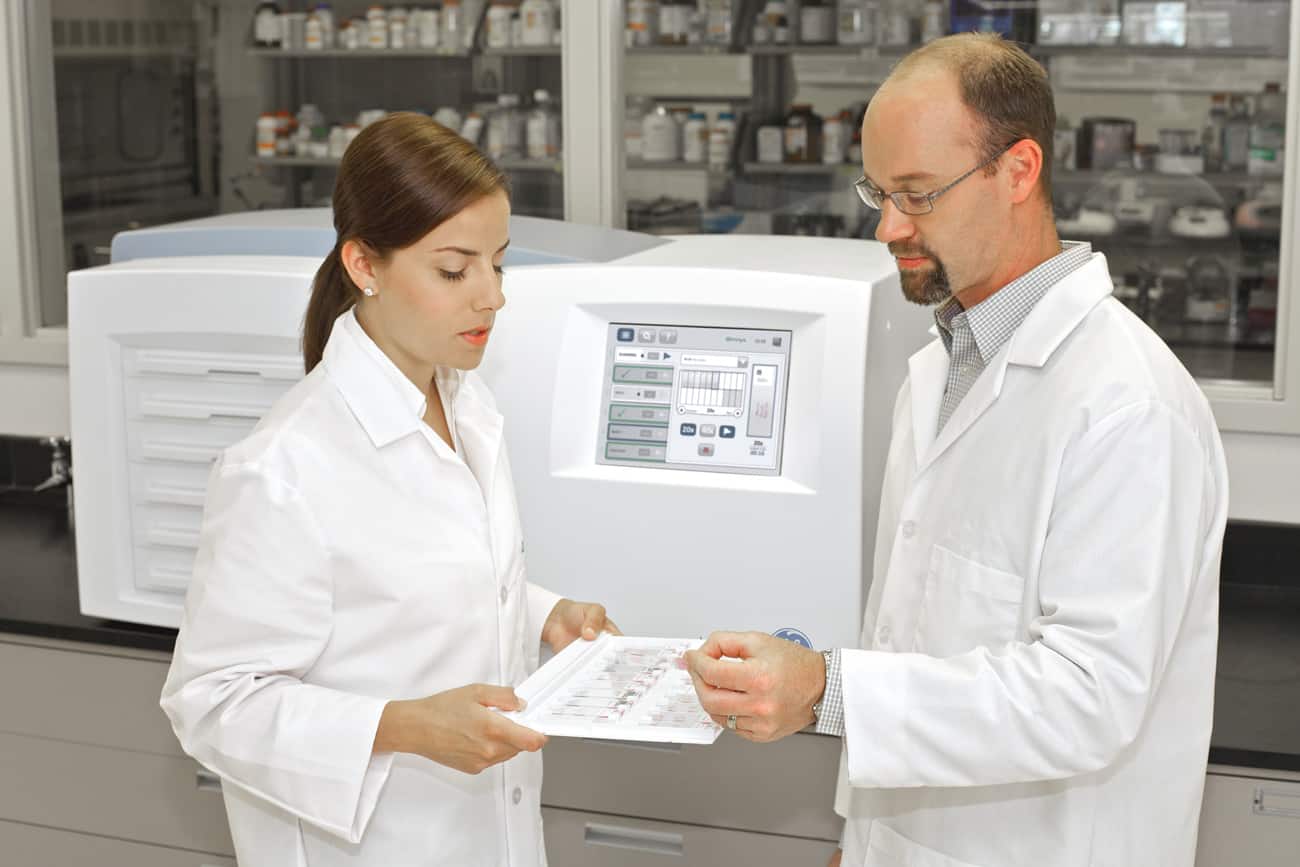
Impact
HSD worked with Omnyx in the early stages to assist in the development of a full line of digital pathology solutions and peripheral devices. While traditional digital systems are based on stacking slides vertically, this tray design allows slide samples to be easily transferred to pathologist if required and avoids extra steps associated with sorting. The complete solution included direct involvement with active Pathologists to develop an intuitive easy-to-use interface and high-speed quality scanning devices, ultimately increasing efficiency in high volume histology lab environments.
Impact
HSD worked with Omnyx in the early stages to assist in the development of a full line of digital pathology solutions and peripheral devices. While traditional digital systems are based on stacking slides vertically, this tray design allows slide samples to be easily transferred to pathologist if required and avoids extra steps associated with sorting. The complete solution included direct involvement with active Pathologists to develop an intuitive easy-to-use interface and high-speed quality scanning devices, ultimately increasing efficiency in high volume histology lab environments.


